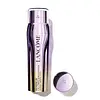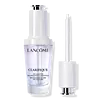What's inside
What's inside
 Key Ingredients
Key Ingredients

 Benefits
Benefits

 Concerns
Concerns

 Ingredients Side-by-side
Ingredients Side-by-side

Water
Skin ConditioningPropylene Glycol
HumectantGlycerin
HumectantDipropylene Glycol
HumectantAscorbic Acid
AntioxidantPentylene Glycol
Skin ConditioningOctyldodecanol
EmollientCaprylic/Capric Triglyceride
MaskingButylene Glycol
HumectantPanthenol
Skin ConditioningHydrolyzed Lupine Protein
Skin ConditioningAdenosine
Skin ConditioningCarbomer
Emulsion StabilisingCeramide AP
Skin ConditioningCeramide EOP
Skin ConditioningCeramide NP
Skin ConditioningCholesterol
EmollientFerulic Acid
AntimicrobialHydroxyacetophenone
AntioxidantPentaerythrityl Tetra-Di-T-Butyl Hydroxyhydrocinnamate
AntioxidantPhytosphingosine
Skin ConditioningSodium Hyaluronate
HumectantSodium Lauroyl Lactylate
EmulsifyingTrisodium Ethylenediamine Disuccinate
3-O-Ethyl Ascorbic Acid
Skin ConditioningNiacinamide
SmoothingRetinol
Skin ConditioningRetinyl Palmitate
Skin ConditioningTocopherol
AntioxidantButyrospermum Parkii Butter
Skin ConditioningCocos Nucifera Oil
MaskingGlycol Palmitate
EmulsifyingLimnanthes Alba Seed Oil
Skin ConditioningPEG-6 Caprylic/Capric Glycerides
EmulsifyingPrunus Armeniaca Kernel Oil
MaskingSimmondsia Chinensis Seed Oil
EmollientSqualane
EmollientAlcohol Denat.
AntimicrobialAmmonium Polyacryloyldimethyl Taurate
Emulsion StabilisingCaprylyl Glycol
EmollientCitric Acid
BufferingGlyceryl Isostearate
EmollientGlyceryl Stearate Citrate
EmollientGlycine Soja Oil
EmollientHelianthus Annuus Seed Oil
EmollientPPG-6-Decyltetradeceth-30
EmulsifyingSodium Polyacrylate
AbsorbentTriethyl Citrate
MaskingXanthan Gum
EmulsifyingCI 19140
Cosmetic ColorantBenzoic Acid
MaskingPhenoxyethanol
PreservativeSodium Benzoate
MaskingParfum
MaskingWater, Propylene Glycol, Glycerin, Dipropylene Glycol, Ascorbic Acid, Pentylene Glycol, Octyldodecanol, Caprylic/Capric Triglyceride, Butylene Glycol, Panthenol, Hydrolyzed Lupine Protein, Adenosine, Carbomer, Ceramide AP, Ceramide EOP, Ceramide NP, Cholesterol, Ferulic Acid, Hydroxyacetophenone, Pentaerythrityl Tetra-Di-T-Butyl Hydroxyhydrocinnamate, Phytosphingosine, Sodium Hyaluronate, Sodium Lauroyl Lactylate, Trisodium Ethylenediamine Disuccinate, 3-O-Ethyl Ascorbic Acid, Niacinamide, Retinol, Retinyl Palmitate, Tocopherol, Butyrospermum Parkii Butter, Cocos Nucifera Oil, Glycol Palmitate, Limnanthes Alba Seed Oil, PEG-6 Caprylic/Capric Glycerides, Prunus Armeniaca Kernel Oil, Simmondsia Chinensis Seed Oil, Squalane, Alcohol Denat., Ammonium Polyacryloyldimethyl Taurate, Caprylyl Glycol, Citric Acid, Glyceryl Isostearate, Glyceryl Stearate Citrate, Glycine Soja Oil, Helianthus Annuus Seed Oil, PPG-6-Decyltetradeceth-30, Sodium Polyacrylate, Triethyl Citrate, Xanthan Gum, CI 19140, Benzoic Acid, Phenoxyethanol, Sodium Benzoate, Parfum
Water
Skin ConditioningGluconolactone
Skin ConditioningNiacinamide
SmoothingButylene Glycol
HumectantPEG/PPG/Polybutylene Glycol-8/5/3 Glycerin
HumectantAlcohol Denat.
AntimicrobialPentylene Glycol
Skin ConditioningPotassium Hydroxide
BufferingMethyl Gluceth-20
HumectantTocopherol
AntioxidantHydroxyethylcellulose
Emulsion StabilisingSodium Hyaluronate
HumectantPPG-6-Decyltetradeceth-30
EmulsifyingFagus Sylvatica Bud Extract
TonicSalicylic Acid
MaskingChlorphenesin
AntimicrobialHelianthus Annuus Seed Oil
EmollientBenzoic Acid
MaskingSorbic Acid
PreservativeRosmarinus Officinalis Extract
AntimicrobialVitis Vinifera Seed Oil
EmollientPhytic Acid
Glycolic Acid
BufferingParfum
MaskingWater, Gluconolactone, Niacinamide, Butylene Glycol, PEG/PPG/Polybutylene Glycol-8/5/3 Glycerin, Alcohol Denat., Pentylene Glycol, Potassium Hydroxide, Methyl Gluceth-20, Tocopherol, Hydroxyethylcellulose, Sodium Hyaluronate, PPG-6-Decyltetradeceth-30, Fagus Sylvatica Bud Extract, Salicylic Acid, Chlorphenesin, Helianthus Annuus Seed Oil, Benzoic Acid, Sorbic Acid, Rosmarinus Officinalis Extract, Vitis Vinifera Seed Oil, Phytic Acid, Glycolic Acid, Parfum
 Reviews
Reviews

Ingredients Explained
These ingredients are found in both products.
Ingredients higher up in an ingredient list are typically present in a larger amount.
Alcohol Denat. is an alcohol with a denaturant property. It is created by mixing ethanol with other additives.
This ingredient gets a bad rep because it is irritating and drying - mostly due to its astringent property. Astringents draw out natural oils in tissue, constricting pores and leaving your skin dried out.
However, alcohol denat. is not all that bad.
Due to its low molecular weight, alcohol denat. tends to evaporate quickly. One study on pig skin found half of applied alcohol evaporated in 10 seconds and less than 3% stayed on skin.
This also helps other ingredients become better absorbed upon application.
Studies are conflicted about whether this ingredient causes skin dehydration. One study from 2005 found adding emollients to propanol-based sanitizer decreased skin dryness and irritation. Another study found irritation only occurs if your skin is already damaged.
Small amounts of alcohol are generally tolerated by oily skin or people who live in humid environments.
The rule of thumb is if this alcohol is near the end of an ingredients list, it will probably not affect your skin much.
Also...
This ingredient has antimicrobial and solvent properties.
The antimicrobial property helps preserve products and increase their shelf life. As a solvent, it helps dissolve other ingredients.
Other types of astringent alcohols include:
Learn more about Alcohol Denat.Benzoic Acid is used to preserve and adjust the pH of products.
The antimicrobial property of Benzoic Acid helps elongate a product's shelf life. Its main role is to reduce fungi growth and is not found to be effective at fighting bacteria. Therefore Benzoic Acid is always added along with other preservatives.
In its pure form, Benzoic Acid looks like a white crystalline solid. It has slight solubility in water.
The name of Benzoic Acid comes from gum benzoin, which used to be the sole source of deriving this ingredient. Benzoic Acid is the most simple aromatic carboxylic acid.
Benzoic Acid is naturally occuring in strawberries, mustard, cinnamon, and cloves. It has a slight scent but is not considered to be a fragrance.
Learn more about Benzoic AcidButylene Glycol (or BG) is used within cosmetic products for a few different reasons:
Overall, Butylene Glycol is a safe and well-rounded ingredient that works well with other ingredients.
Though this ingredient works well with most skin types, some people with sensitive skin may experience a reaction such as allergic rashes, closed comedones, or itchiness.
Learn more about Butylene GlycolHelianthus Annuus Seed Oil is the oil derived from the seeds of a Sunflower. Sunflower seed oil is non-fragrant. It is an emollient, meaning it helps to soften the skin.
Sunflower seed oil contains many fatty acids. The fatty acids found in sunflower seeds include (from highest amount to least): linoleic acid, myristic acid, palmitic acid, stearic acid, arachidic acid, oleic acid, and linolenic acid.
These fatty acids help the skin create ceramides. Ceramides play a role in repairing the skin barrier.
Helianthus Annuus Seed Oil helps moisturize the skin. This in turn helps the skin look more rejuvenated and smoother.
Sunflowers are rich in vitamin E.
Historians believe Indigenous cultures of North America domesticated sunflowers before corn. Thus they relied on sunflower oil for a variety of uses. One such use is moisturizing skin and hair.
Sunflower seed oil may not be fungal acne safe. We recommend speaking with a professional if you have any concerns.
Learn more about Helianthus Annuus Seed OilNiacinamide is a multitasking form of vitamin B3 that strengthens the skin barrier, reduces pores and dark spots, regulates oil, and improves signs of aging.
And the best part? It's gentle and well-tolerated by most skin types, including sensitive and reactive skin.
You might have heard of "niacin flush", or the reddening of skin that causes itchiness. Niacinamide has not been found to cause this.
In very rare cases, some individuals may not be able to tolerate niacinamide at all or experience an allergic reaction to it.
If you are experiencing flaking, irritation, and dryness with this ingredient, be sure to double check all your products as this ingredient can be found in all categories of skincare.
When incorporating niacinamide into your routine, look out for concentration amounts. Typically, 5% niacinamide provides benefits such as fading dark spots. However, if you have sensitive skin, it is better to begin with a smaller concentration.
When you apply niacinamide to your skin, your body converts it into nicotinamide adenine dinucleotide (NAD). NAD is an essential coenzyme that is already found in your cells as "fuel" and powers countless biological processes.
In your skin, NAD helps repair cell damage, produce new healthy cells, support collagen production, strengthen the skin barrier, and fight environmental stressors (like UV and pollution).
Our natural NAD levels start to decline with age, leading to slower skin repair, visible aging, and a weaker skin barrier. By providing your skin niacinamide, you're recharging your skin's NAD levels. This leads to stronger, healthier, and younger looking skin.
Another name for vitamin B3 is nicotinamide. This vitamin is water-soluble and our bodies don't store it. We obtain Vitamin B3 from either food or skincare. Meat, fish, wheat, yeast, and leafy greens contain vitamin B3.
The type of niacinamide used in skincare is synthetically created.
Learn more about NiacinamideParfum is a catch-all term for an ingredient or more that is used to give a scent to products.
Also called "fragrance", this ingredient can be a blend of hundreds of chemicals or plant oils. This means every product with "fragrance" or "parfum" in the ingredients list is a different mixture.
For instance, Habanolide is a proprietary trade name for a specific aroma chemical. When used as a fragrance ingredient in cosmetics, most aroma chemicals fall under the broad labeling category of “FRAGRANCE” or “PARFUM” according to EU and US regulations.
The term 'parfum' or 'fragrance' is not regulated in many countries. In many cases, it is up to the brand to define this term.
For instance, many brands choose to label themselves as "fragrance-free" because they are not using synthetic fragrances. However, their products may still contain ingredients such as essential oils that are considered a fragrance by INCI standards.
One example is Calendula flower extract. Calendula is an essential oil that still imparts a scent or 'fragrance'.
Depending on the blend, the ingredients in the mixture can cause allergies and sensitivities on the skin. Some ingredients that are known EU allergens include linalool and citronellol.
Parfum can also be used to mask or cover an unpleasant scent.
The bottom line is: not all fragrances/parfum/ingredients are created equally. If you are worried about fragrances, we recommend taking a closer look at an ingredient. And of course, we always recommend speaking with a professional.
Learn more about ParfumPentylene glycol is typically used within a product to thicken it. It also adds a smooth, soft, and moisturizing feel to the product. It is naturally found in plants such as sugar beets.
The hydrophilic trait of Pentylene Glycol makes it a humectant. As a humectant, Pentylene Glycol helps draw moisture from the air to your skin. This can help keep your skin hydrated.
This property also makes Pentylene Glycol a great texture enhancer. It can also help thicken or stabilize a product.
Pentylene Glycol also acts as a mild preservative and helps to keep a product microbe-free.
Some people may experience mild eye and skin irritation from Pentylene Glycol. We always recommend speaking with a professional about using this ingredient in your routine.
Pentylene Glycol has a low molecular weight and is part of the 1,2-glycol family.
Learn more about Pentylene GlycolWe don't have a description for PPG-6-Decyltetradeceth-30 yet.
Sodium Hyaluronate is hyaluronic acid's salt form. It is commonly derived from the sodium salt of hyaluronic acid.
Like hyaluronic acid, it is great at holding water and acts as a humectant. This makes it a great skin hydrating ingredient.
Sodium Hyaluronate is naturally occurring in our bodies and is mostly found in eye fluid and joints.
These are some other common types of Hyaluronic Acid:
Learn more about Sodium HyaluronateTocopherol (also known as Vitamin E) is a common antioxidant used to help protect the skin from free-radicals and strengthen the skin barrier. It's also fat soluble - this means our skin is great at absorbing it.
Vitamin E also helps keep your natural skin lipids healthy. Your lipid skin barrier naturally consists of lipids, ceramides, and fatty acids. Vitamin E offers extra protection for your skin’s lipid barrier, keeping your skin healthy and nourished.
Another benefit is a bit of UV protection. Vitamin E helps reduce the damage caused by UVB rays. (It should not replace your sunscreen). Combining it with Vitamin C can decrease sunburned cells and hyperpigmentation after UV exposure.
You might have noticed Vitamin E + C often paired together. This is because it is great at stabilizing Vitamin C. Using the two together helps increase the effectiveness of both ingredients.
There are often claims that Vitamin E can reduce/prevent scarring, but these claims haven't been confirmed by scientific research.
Learn more about TocopherolWater. It's the most common cosmetic ingredient of all. You'll usually see it at the top of ingredient lists, meaning that it makes up the largest part of the product.
So why is it so popular? Water most often acts as a solvent - this means that it helps dissolve other ingredients into the formulation.
You'll also recognize water as that liquid we all need to stay alive. If you see this, drink a glass of water. Stay hydrated!
Learn more about Water